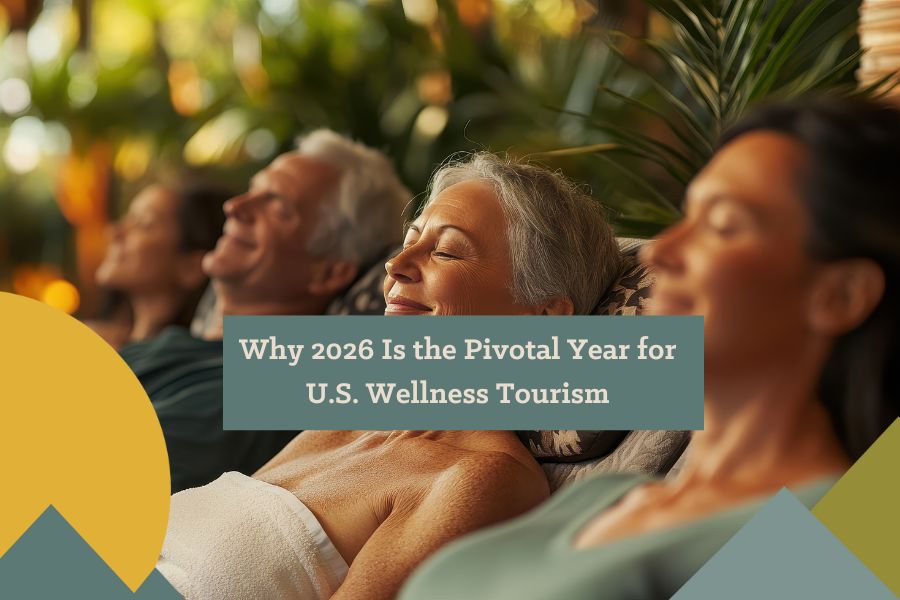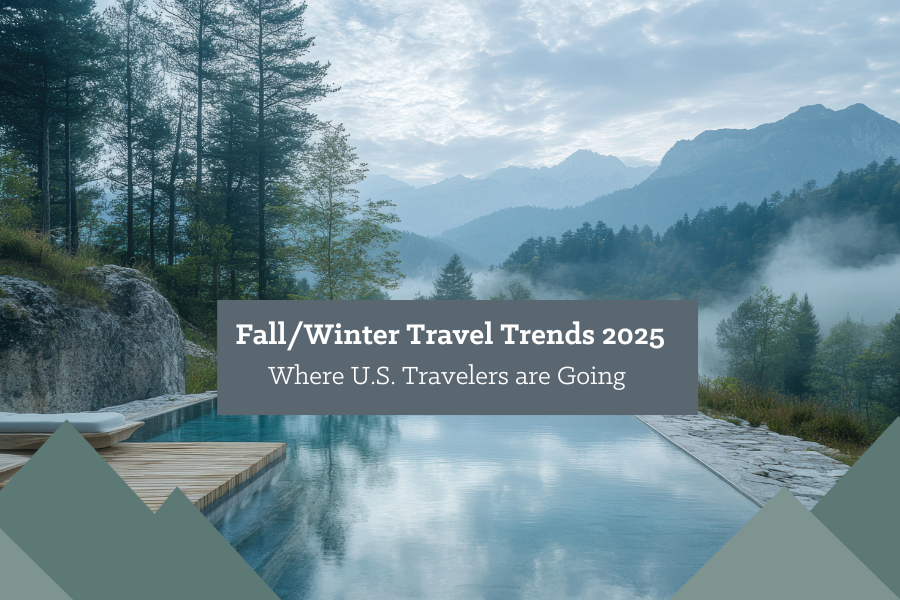Welcome to the July 2025 IGES newsletter. This month, we explore fresh insights into U.S. domestic travel behavior across families, solo travelers, and luxury seekers, along with new inspiration for retailers and attractions adapting to these shifts.
Top Travel Trends for Summer 2025
Emerging Luxury “Experience Capsules”
Ultra-high-end travelers are gravitating toward short but immersive luxury getaways—everything from “Hamptons girls’ weekends” costing $5,000+ per person to curated wellness retreats. Social media–driven itineraries emphasize boutique fitness, private chef dinners, and influencer-worthy photo ops, even amid economic headwinds.
Selective Solo Travel: The “Solorette” Phenomenon
Though overall solo travel has declined, a niche trend has emerged among brides opting for “solorettes”— solo bachelorette retreats focused on self-care and reflection before marriage. These trips blend mindfulness (e.g., Sedona wellness stays) with destination appeal (e.g., New Orleans culinary tours), underscoring solo travel as self-affirmation rather than mere adventure.
Scaled-Back Yet Meaningful Luxury Travel
Affluent consumers continue booking luxury domestic trips, but with a sharper focus on curated, experience-driven itineraries. Instead of week-long resort stays, luxury travelers favor “experience capsules”—two- to three-night bespoke stays at boutique wellness retreats, historic inns, or culinary-focused farm stays. Nearly 62% of high-net-worth respondents in the Preferred Hotels & Resorts Luxury Travel Report say they prefer immersive cultural experiences over purely opulent amenities.
Caution Among Low- and Middle-Income Households
While 76% of Americans plan to travel in 2025, diving deep into WSJ data shows that leisure demand among lower-income brackets is fragile. The Conference Board’s Consumer Confidence Index sits near its lowest since 2021, and airfare is up 11% year-over-year. These pressures have driven 21% of travelers to replace long-haul plane trips with domestic road journeys this season.
Merch Magic: Display Trends That Convert
Resort-Core Meets Local Craftsmanship
The “resort-core” aesthetic — driven by travelers’ desire to extend that vacation feeling into everyday life—spurs a new wave of design-forward merchandising. According to Livingetc, resort-core blends luxe textures and calming palettes with artisanal, region-specific goods. Retailers can tap this by displaying plush, travel-inspired loungewear alongside handcrafted home décor sourced from local makers, evoking a vacation vibe in-store.
Subscription and Membership Boxes
Inspired by broader retail subscription trends, tourism retailers are introducing “Local Flavor” boxes. Monthly or quarterly curated collections—featuring region-specific snacks, handcrafted textiles, and digital vouchers for nearby attractions—enable travelers to relive experiences post-trip or sample new locales before visiting. Travel subscription adoption is accelerating, offering retailers a new recurring-revenue stream.
Customer Connection Corner
Elevating Loyalty with Data-Driven Personalization
Travel industry leaders report that loyalty programs have never been more central to retention: 85% say these initiatives have grown in prominence over the past two years, and 22% higher budgets in 2024 underscore that priority. Programs that use real-time data to trigger tailored offers (e.g., upgrade alerts, region-specific perks) see active member rates rise by 24%. These insights come from Deloitte’s latest “Travel Loyalty Programs: 10 Insights from Surveyed Leaders.”
IGES Ideas: Product Spotlight
Handcrafted “Experience Keepsake” Collections
According to the Preferred Hotels & Resorts Luxury Travel Report, 68% of affluent travelers now seek locally made artisan mementos that reflect the culture and craftsmanship of their destination. Curate “Experience Keepsake” bundles—such as hand-blown glass from coastal studios or small-batch spice blends from regional producers—to meet this desire for authenticity and drive higher margin sales.
Attraction Action
San Diego Zoo Safari Park—“Roar & Snore” All-Ages Sleepovers
The San Diego Zoo Safari Park continues to innovate with its “Roar & Snore” program, offering themed overnight camping experiences under the stars alongside live animal exhibits. June 2025 dates include Fathers’ Day special sleepovers (June 14–15), with guided night safaris, campfire programs, and conservation talks. This all-ages immersive adventure appeals to families and solo nature enthusiasts, boosting weekday attendance during off-peak periods.
Houston Zoo—Jack’s Café Launch & Camp Zoofari
The Houston Zoo unveils Jack’s Café & Reflections Event Hall, opening June 2025. Named for longtime patron John P. McGovern, Jack’s Café is a 4,286 sq. ft. indoor-outdoor venue overlooking the new Galápagos Islands exhibit, featuring bird-friendly glass and an 18,000-gallon rainwater harvesting system. In tandem, Camp Zoofari kicks off its June sessions (June 2, 9, 16, 23, 30), offering week-long conservation camps for ages 6–12 that include behind-the-scenes animal care experiences and guided “nocturnal night” hikes. These new offerings position Houston Zoo as a must-visit for family and nature travelers seeking immersive, educational adventures.
Smithsonian Traveling Exhibits—“Crossroads: Change in Rural America”
In June 2025, the Smithsonian Institution continued the “Crossroads: Change in Rural America” exhibit to Bandera, Texas (June 21–Aug 2) as part of its Museum on Main Street program. This interactive, mobile exhibit features photograms, audio narratives, and artifacts chronicling rural transformation over the 20th century. Retailers near host sites can leverage foot traffic by offering traveler-oriented merchandise bundles—e.g., “Texas Heritage” kits including local preserves, quilting squares, and a roadmap to nearby agritourism stops.
Sustainable Scene
A Make-or-Break Year for Sustainable Business
WSJ’s “The Year Ahead in Sustainable Business” highlights that 2025 will be pivotal for carbon-credit markets, new COP regulations, and U.S. political shifts impacting ESG priorities. Travel and retail brands that align product assortments with verified sustainability metrics—and offer point-of-sale carbon offsets—will not only meet growing consumer demand but also gain strategic resilience in a tightening regulatory environment.
Stay tuned as we continue to navigate these changes together. We invite you to subscribe for more insights and strategic ideas to keep you ahead in the evolving tourism market.








